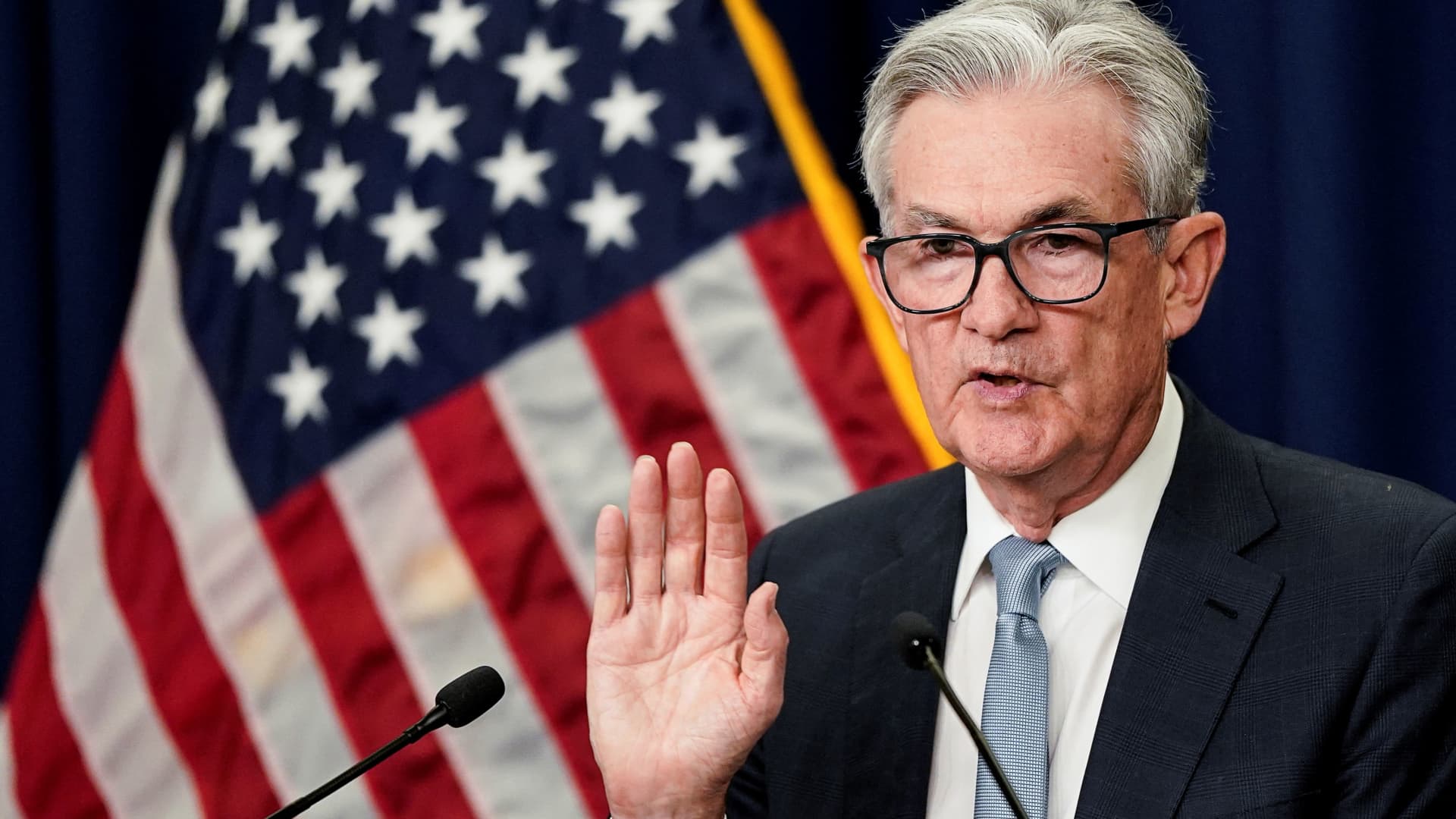The Federal Reserve on Wednesday enacted its second consecutive 0.75 percentage point interest rate increase as it seeks to tamp down runaway inflation without creating a recession.
In taking the benchmark overnight borrowing rate up to a range of 2.25%-2.5%, the moves in June and July represent the most stringent consecutive moves since the Fed began using the overnight funds rate as the principal tool of monetary policy in the early 1990s.
While the fed funds rate most directly impacts what banks charge each other for short-term loans, it feeds into a multitude of consumer products such as adjustable mortgages, auto loans and credit cards. The increase takes the funds rate to its highest level since December 2018.
Markets largely expected the move after Fed officials telegraphed the increase in a series of statements since the June meeting, and held on to gains after the announcement. Central bankers have emphasized the importance of bringing down inflation even if it means slowing the economy.
In its post-meeting statement, the rate-setting Federal Open Market Committee cautioned that “recent indicators of spending and production have softened.”
“Nonetheless, job gains have been robust in recent months, and the unemployment rate has remained low,” the committee added, using language similar to the June statement. Officials again described inflation as “elevated” and ascribed the situation to supply chain issues and higher prices for food and energy along with “broader price pressures.”
The rate hike was approved unanimously. In June, Kansas City Fed President Esther George dissented, advocating a slower course with a half percentage point increase.
The increases come in a year that began with rates floating around zero but which has seen a commonly cited inflation measure run at 9.1% annually. The Fed aims for inflation around 2%, though it adjusted that goal in 2020 to allow it to run a bit hotter in the interest of full and inclusive employment.
In June, the eunemployment rate held at 3.6%, close to full employment. But inflation, even by the Fed’s standard of core personal consumption expenditures, which was at 4.7% in May, is well off target.
The efforts to bring down inflation are not without risks. The U.S. economy is teetering on the brink of a recession as inflation slows consumer purchases and dents business activity.
First-quarter GDP declined by 1.6% annualized, and markets were bracing for a reading on the second quarter to be released Thursday that could show consecutive declines, a widely used barometer for a recession. The Dow Jones estimate for Thursday’s reading is for growth of 0.3%.
Along with rate increases, the Fed is reducing the size of asset holdings on its nearly $9 trillion balance sheet. Beginning in June, the Fed began allowing some of the proceeds from maturing bonds to roll off.
The balance sheet has declined just $16 billion since the beginning of the roll-off, though the Fed set a cap of up to $47.5 billion that potentially could have been wound down. The cap will rise through the summer, eventually hitting $95 billion a month by September. The process is known in markets as “quantitative tightening” and is another mechanism the Fed uses to impact financial conditions.
Along with the accelerated balance sheet runoff, markets expect the Fed to raise rates at least another half percentage point in September. Traders Wednesday afternoon were assigning about a 53% chance the central bank would go even further, with a third straight 0.75 percentage point, or 75 basis points, increase in September, according to CME Group data.
The FOMC does not meet in August, but officials will gather in Jackson Hole, Wyoming, for the Fed’s annual retreat.
Markets expect the Fed to start cutting rates by next summer, even though committee projections released in June show no cuts until at least 2024.
Multiple officials have said they expect to hike aggressively through September then assess what impact the moves were having on inflation. Despite the 1.5 percentage point increases between March and June, the June consumer price index reading was the highest since November 1981, with the rent index at its highest level since April 1986 and dental care costs hitting a record in a data series going back to 1995.
The central bank has faced critics, both for being too slow to tighten when inflation first started to accelerate in 2021, and for possibly going too far and causing a more severe economic downturn.
Sen. Elizabeth Warren (D-Mass.) told CNBC on Wednesday that she worried the Fed hikes would pose economic danger to those at the lowest end of the economic spectrum by raising unemployment.

